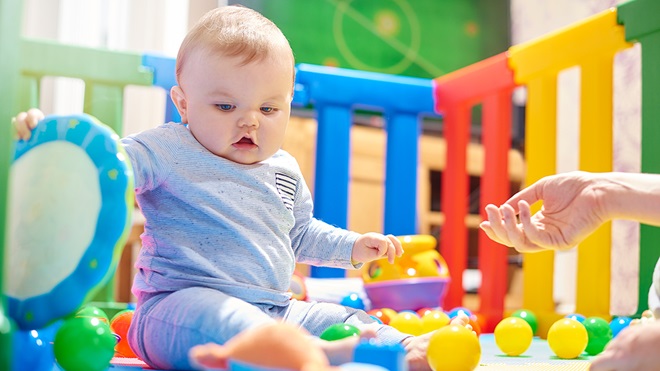Once your baby starts exploring, a playpen is one way to let them play independently while still keeping an eye on them. But without any Australian standard for playpens, how can you be sure they're safe enough to secure your child and prevent injury? CHOICE is here to help.
On this page:
Our expert testers
With more than 15 years of experience, our expert testers are the bees' knees of children's product testing. They've seen all sorts of playpen configurations on the market, and have put each type to the test. Our testers also sit on the Australian Standards committees for children's products.
How we choose what we test
Most of the time, our priority is to test what you'll see in stores. Our playpens typically come from brands available in mainstream nursery or department stores, or ones that feature prominently when you search for them online. We also keep discontinued models in our table, as there's a second-hand market for them.
To come up with our product list we survey manufacturers to find out about their range of models and we take member feedback on board. Our buyers then purchase products just like a regular consumer would, either instore or online. This is to make sure the products we receive haven't been 'tweaked' in any way, or received special treatment during transit.
How we test playpens
Although there's no currently Australian standard for playpens, our experts know what to look for when it comes to child safety. We've based our test procedures on various existing Australian standards for similar children's products such as cots, folding cots and toys. We also draw upon elements of overseas standards, including the European and American playpen standards. Several manufacturers claim compliance to one or both of these standards, but we test to the CHOICE method.
When testing playpens the three main areas we look at are construction, effectiveness and ease of use.
Construction
We check whether the playpen has any objects that could be inhaled or ingested. We look for potential contact with sharp corners, edges and points, and whether the playpen has any projections that could hurt a child if they ran towards them at speed. We look for potential clothing entanglement hazards that could pose a strangulation risk. We also check for structural integrity and stability (how strong the bars are).
Effectiveness
Using suitable measuring devices, our experts look for potential footholds that could cause a child to climb the enclosure and escape, or that could pose a fall risk. We also check the security of the gate (if there is one). It needs to be childproof, and automatically latch when it's closed.
We test for limb and head entrapment risks between gaps in the bars as well as any gaps covered by velcro flaps which could be easily pulled away by a child, therefore exposing the gap. We use both Australian cot standard probes (30–50mm and 95mm) and European probes (25–45mm and 65mm) to identify entrapment risks.
Ease of use
We look at the amount of effort required to assemble and install the playpen, how easy it is to release and close the latch, and how easy it is to open and close the playpen (for an adult).
Test criteria explained
We usually recommend children's products according to whether they pass or fail major tests (this makes up 70% of the CHOICE Expert Rating, our overall score). We also incorporate an ease of use score (30%).
Playpens that we recommend have passed all our major safety tests (scoring 80% or above for performance). Some models that are worth considering (with performance results from 60–65%) have minor failures such as finger entrapment hazards or sharp edges in hard-to-reach areas.
We test for head and limb entrapment using both European and Australian probes – if one set of probes passes this test, then we class it as a minor failure, but if both fail, then it's a major failure.
Playpens that score under 50% for performance are not recommended because it means the playpen has not passed key safety tests. We list these failures in our 'Bad points' section of the playpen reviews table.
We're on your side
For more than 60 years, we've been making a difference for Australian consumers. In that time, we've never taken ads or sponsorship.
Instead we're funded by members who value expert reviews and independent product testing.
With no self-interest behind our advice, you don't just buy smarter, you get the answers that you need.
You know without hesitation what's safe for you and your family. And our recent sunscreens test showed just how important it is to keep business claims in check.
So you'll never be alone when something goes wrong or a business treats you unfairly.
Learn more about CHOICE membership today
Stock images: Getty, unless otherwise stated.



